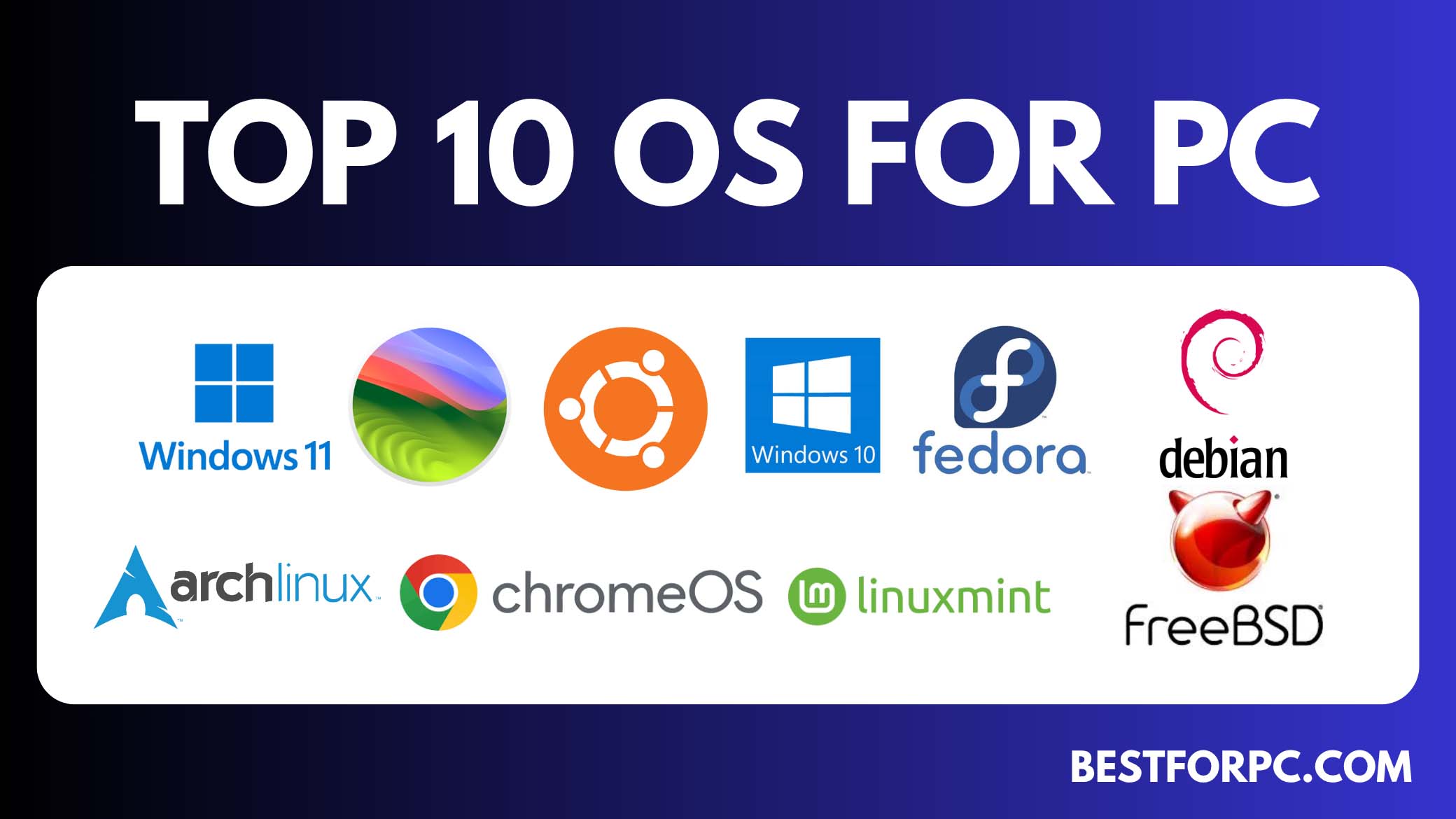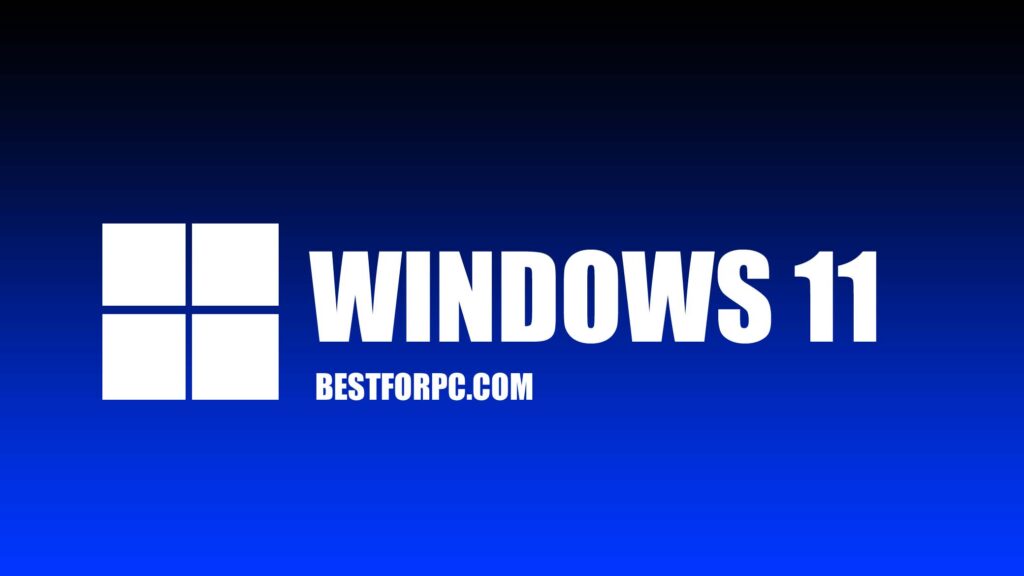Top 10 Operating Systems for PC in 2025
Best PC Operating Systems (OS) Ranked for Performance, Security & Usability
Top 10 Operating Systems for PC in 2025, A Guide for Professionals and Everyday Users
In today’s fast-paced digital world, choosing the right operating system (OS) is essential for getting the most out of your computer. Whether you’re a developer, designer, gamer, or casual user, your OS choice has a big impact on your overall experience. This guide highlights the top 10 operating systems for PC in 2025, looking at their features, strengths, and best uses.
-
Windows 11, Industry Standard for Productivity and Gaming
- Developer: Microsoft
- Category: Proprietary, Commercial
- Target Users: Professionals, gamers, corporate environments, home users
Windows 11 is Microsoft’s latest operating system. It combines a modern look with strong productivity and gaming features. It works well with many types of software and hardware, making it the default choice for many users around the world.
Key Features:
- Refined user interface with Snap Layouts and Widgets
- Direct Storage and Auto HDR for better gaming
- Seamless integration with Microsoft 365 and OneDrive
- Android app support via Amazon Appstore
Advantages:
- Wide software compatibility
- Great for gaming, office work, and multitasking
- Strong support for businesses
Limitations:
- High system requirements
- Frequent updates can disrupt your workflow
-
macOS Sonoma, Optimized for Creative and Professional Workflows
- Developer: Apple Inc.
- Category: Proprietary, Commercial
- Target Users: Creative professionals, macOS users, content creators
macOS Sonoma offers outstanding performance and stability, designed for Apple hardware. It is known for its sleek design and smooth integration with other Apple devices, making it popular among creative professionals.
Key Features:
- Close integration with iPhone, iPad, and Apple Watch
- System-wide video conferencing improvements
- Interactive widgets and better multitasking
- Secure Enclave and advanced privacy settings
Advantages:
- Very stable and responsive
- Long-term support and tuning
- Great for video editing, music production, and design
Limitations:
- Only works on Apple hardware
- Fewer software options compared to Windows
-
Ubuntu, Leading Open-Source OS for Development and Education
- Developer: Canonical Ltd.
- Category: Open-source, Free
- Target Users: Developers, IT professionals, students, privacy-focused users
Ubuntu is the most popular Linux distribution, known for its stability, usability, and strong security. It is widely used in education, development, and server environments.
Key Features:
- GNOME desktop environment with Snap and Flatpak support
- Large software library via Ubuntu Software Center
- LTS (Long-Term Support) editions Built-in firewall and system hardening
Advantages:
- Free and highly customizable
- Regular security updates and community support
- Good performance on both new and old hardware
Limitations:
- May require some technical knowledge for advanced setup
- Not compatible with many commercial applications
-
Windows 10, Proven and Reliable for Legacy Systems
- Developer: Microsoft
- Category: Proprietary, Commercial
- Target Users: Users of older systems, small businesses, owners of older PCs
While Microsoft is phasing out Windows 10 by late 2025, it is still a preferred choice for users with older devices or key software needs.
Key Features:
- Familiar Start Menu and taskbar
- Cortana integration
- Virtual desktops and Timeline
- Built-in antivirus (Windows Defender)
Advantages:
- Wide hardware and software compatibility
- A stable and mature platform
- Lower hardware requirements than Windows 11
Limitations:
- End of official support is coming
- Fewer security enhancements compared to Windows 11
-
Fedora, Cutting-Edge OS for Developers and Tech Enthusiasts
- Developer: Fedora Project (sponsored by Red Hat)
- Category: Open-source, Free
- Target Users: Developers, system administrators, Linux professionals
Fedora is known for providing the latest features in open-source development. It serves as a testbed for Red Hat Enterprise Linux (RHEL), making it great for users who want the newest Linux tools.
Key Features:
- GNOME by default, with KDE and other options available
- DNF package manager and RPM support
- SELinux security integration
- Podman and Docker support for containerization
Advantages:
- Regular release cycles
- Strong development tools
- Excellent security features
Limitations:
- Frequent updates can lead to instability
- Not easy for beginners
-
Debian, The Foundation of Linux Stability
- Developer: Debian Project
- Category: Open-source, Free
- Target Users: System administrators, advanced users, server environments
Debian is one of the most respected and stable Linux distributions. It serves as the foundation for many other distros, including Ubuntu.
Key Features:
- Reliable kernel and conservative update policies
- Extensive package repositories
- Multilingual support and accessibility tools
- Secure by default
Advantages:
- Exceptional stability for critical use
- Low resource usage
- Ideal for long-term deployments
Limitations:
- Older packages in the stable version
- Requires manual setup for some tasks
-
Linux Mint, Ideal for Windows Migrants
- Developer: Linux Mint Team
- Category: Open-source, Free
- Target Users: Home users, beginners, students
Linux Mint features a Windows-like interface with a Linux backend. Users appreciate its simplicity and ease of use, making it a great choice for those switching from Windows.
Key Features:
- Cinnamon, MATE, and Xfce desktop environments
- Pre-installed codecs and multimedia support
- Update Manager with selective updates
- Flatpak and Snap compatibility
Advantages:
- Very user-friendly
- Works well on low-end hardware
- Fully featured out-of-the-box
Limitations:
- Not ideal for high-end development or gaming
- Less adoption in businesses
-
Arch Linux, Maximum Control and Customization
- Developer: Arch Linux Community
- Category: Open-source, Free
- Target Users: Advanced users, system engineers, power users
Arch Linux is a minimalist distribution designed for users who want complete control over their system. It uses a rolling release model and focuses on simplicity and transparency.
Key Features:
- Pacman package manager
- Rolling updates for the latest software
- Extensive Arch Wiki for documentation
- No pre-installed bloatware
Advantages:
- Highly customizable and lightweight
- Great for learning Linux internals
- Supports the latest kernels and packages
Limitations:
- Complex installation process
- Steep learning curve for beginners
SEO Keywords: Arch Linux guide, build your own OS, advanced Linux distro
-
Chrome OS / Chromium OS, Best for Cloud-Centric Users
- Developer: Google (Chrome OS), Open Source Community (Chromium OS)
- Category: Cloud-based, Freemium
- Target Users: Students, Chromebook users, browser-based users
Chrome OS is built around the Google Chrome browser and designed for cloud computing. Chromium OS is its open-source version, available for other hardware.
Key Features:
- Supports Android and Linux apps
- Integration with Google Play Store
- Fast boot and auto-update system
- Secure sandboxing
Advantages:
- Very lightweight and fast
- Great for internet-based tasks
- Long battery life on supported devices
Limitations:
- Limited offline capabilities
- Not suitable for heavy desktop work
-
FreeBSD, Enterprise-Grade Security and Networking
- Developer: The FreeBSD Project
- Category: Open-source, BSD License
- Target Users: Network engineers, cybersecurity experts, server admins
FreeBSD is a Unix-like OS known for its performance, scalability, and security. It is widely used in networking equipment, storage devices, and critical infrastructure.
Key Features:
- ZFS file system with advanced capabilities
- Jails for secure virtualization
- Robust networking stack
- High-performance server tasks
Advantages:
- Extremely secure and stable
- Detailed system control
- Well-documented and reliable
Limitations:
- Limited desktop use
- More challenging to learn than Linux
Top 10 Operating Systems for PC in 2025
Choosing the best Top 10 Operating Systems for PC depends on your specific needs:
- For general users and gamers: Windows 11
- For creative professionals: macOS Sonoma
- For developers and learners: Ubuntu or Fedora
- For advanced users: Arch Linux or FreeBSD
- For older hardware: Linux Mint or Windows 10
Regardless of your choice, knowing your use case and system compatibility will help you make the right decision.



